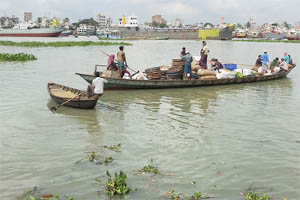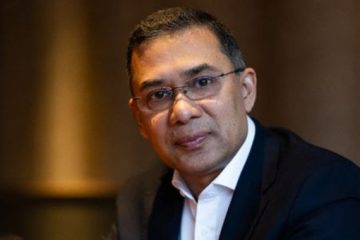$20b project plan
News Desk : dhakamirror.com
The World Bank will lead a $20 billion project to restore Dhaka’s five rivers.
“We see the World Bank’s imprint in countries where it has large-scale operations. Bangladesh lacks World Bank signage. It’s hard to spot the World Bank here,” Finance Minister AHM Mustafa Kamal recalled his conversation with Hartwig Schafer, the WB’s former vice-president for South Asia. He asked Schafer to lead a landmark project in Bangladesh.
Kamal told a press briefing Sunday after meeting Schafer’s successor Martin Raiser, “Do something here so people remember the World Bank for ages.”
During the conversation with Schafer, Kamal mentioned the impact of the development of Hatirjheel had on Dhaka city. That’s when the germ for the project was conceived.
“Dhaka’s rivers can be used similarly. They won’t disappear. Geographically and financially, these rivers will help us. Done, “Added Kamal.
The WB is developing an umbrella investment program (UIP) to restore the five rivers surrounding the capital: Buriganga, Shitalakhya, Balu, Turag (including Tongi canal), and Dhaleshwari.
High population growth, unplanned urbanization, encroachment of rivers and canals, and dumping of solid waste, industrial wastes, and untreated sewage have made “water quality unusable for any purpose,” the WB said in the technical assistance inception report.
Urbanization has jeopardized the city’s unique river morphology and lifeline.
“The restoration of Dhaka rivers and their respective services is a complex challenge,” the WB said. It has experience supporting similar river restoration programs in the Netherlands, Singapore, Vietnam, India, Indonesia, Colombia, and the US.
Although the government has taken steps in this direction, “efforts must be stepped up.”
The Dhaka River Master Plan approved by Prime Minister Sheikh Hasina in 2019 to free all major rivers in and around Dhaka and Chattogram cities from encroachment and pollution by 2030 forms the starting point for the UIP.
“The problems are of such a scale that no project on its own will solve all problems, and all efforts — large and small — will continue to some extent to the needed improvement.”
The UIP needs huge investments that exceed available funds, the WB said..
“There isn’t enough money and capacity to immediately implement all proposed projects.”
WB suggested splitting the program into three phases: short-term development until 2025, medium-term development from 2026 to 2030, and long-term development after 2030.
The WB identified seven development issues: river pollution, illegal encroachment and riverbank management, circulation and navigability, riverbed cleaning (focused on dredging), beautification and living standards, water flows, and climate resistance.
The program would need $20 billion, according to estimates.
Economic Relations Division officials say the WB will be the lead financier and recruit other donors.
Sharifa Khan, ERD secretary, said the government will decide on the next step after receiving the WB’s technical assistance report in April next year.
The WB will review existing river-based plans including the Dhaka River Master Plan and Clean Dhaka Master Plan-2018-2032 and the status of the projects being taken under these plans for the report.
It will recommend investment financing strategies.
Local governments on both sides of the rivers are interested in the Dhaka rivers’ restoration, so their opinion will be sought.
Dhaka Water and Sewerage Authority, Bangladesh Inland Water Transport Authority, Rajuk, and others government agencies will join the UIP.





















